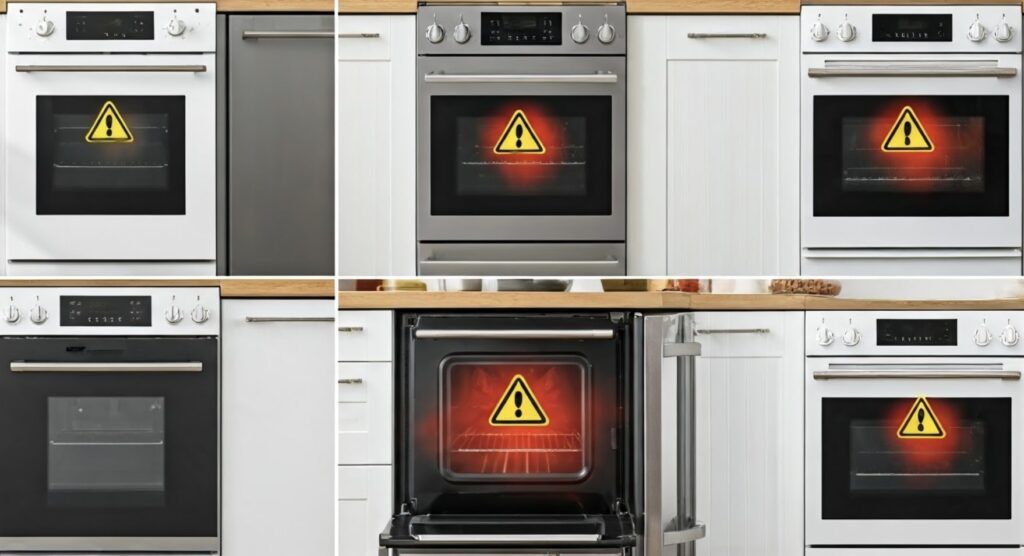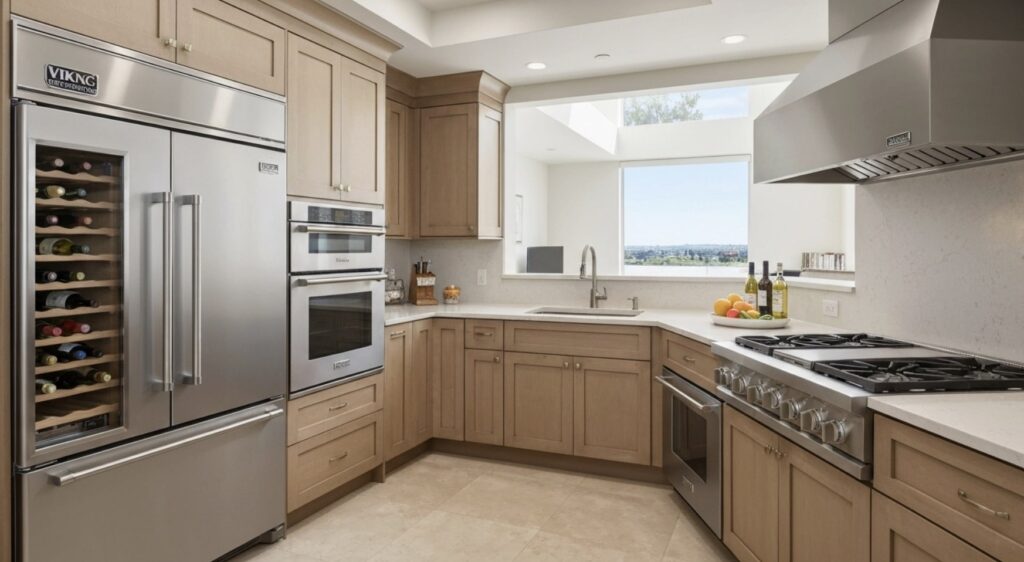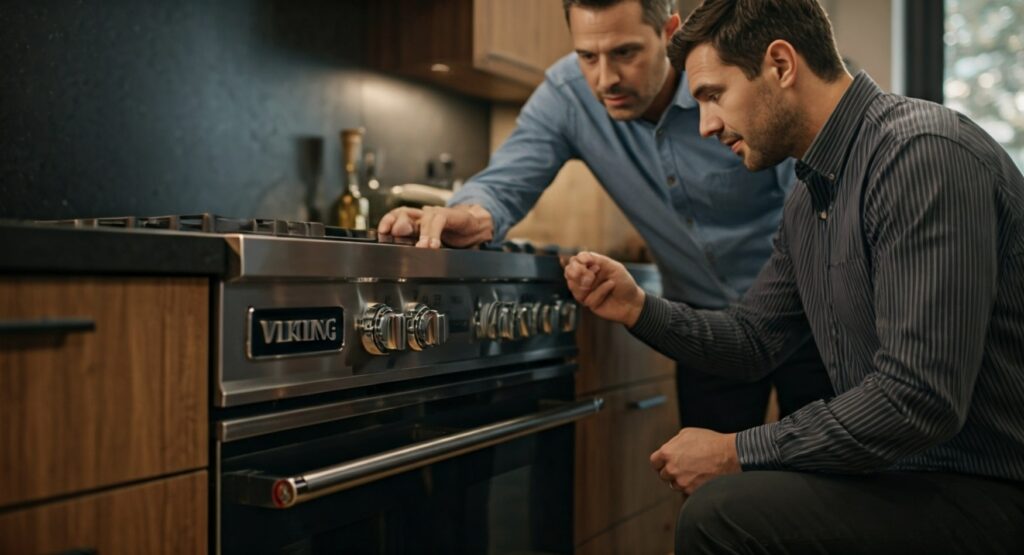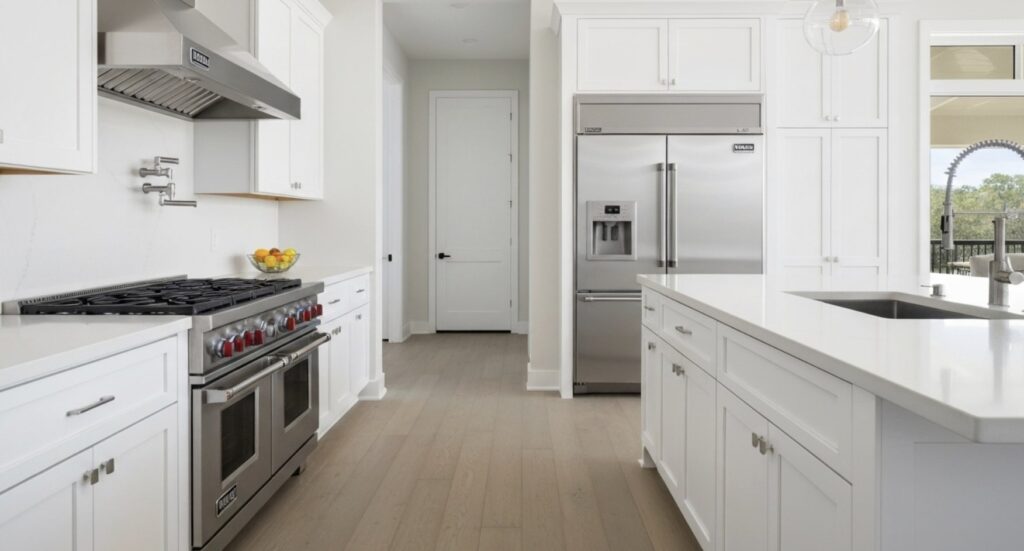Has your oven burnt your food or has your fridge not kept things cold? Too much heating in these appliances can get in the way of your day and can even be unsafe for you. If your oven, fridge, or range is getting too hot, there may be a few reasons, including the risk of overheating. It could be broken sensors or vents that are blocked. Knowing why this happens and how to fix it can save you money on big repairs. It will also help keep your home safe. In this blog, you will find simple ways and tips on how to fix an overheating appliance. This advice will make it easier for you to deal with heating problems in your oven, fridge, and other kitchen tools.
Understanding the Common Causes of Appliance Overheating
Appliances like your Viking oven and refrigerator need certain parts to work well. But when something like a broken thermostat or a bad heating element isn’t working, it can cause overheating. Sometimes, the problem comes because people use the appliance the wrong way, the vents are blocked, or there is not enough care and cleaning. To fix overheating, you first need to find out what is causing it.
When you look more closely, you may find problems you did not see before. Things like grime inside, sensors that are not in the right place, or a cooling fan that does not work can cause issues. Noticing these problems early can stop more damage and help the appliance work like new again. Keep reading to see how to spot signs of overheating in different appliances.
Beginner’s Guide: Preparing to Fix an Overheating Appliance
Before you start to fix an overheating appliance, you need to get ready first. It is very important to have the right tools and to know what steps you need to take. This keeps you safe and makes the job easier. Always make sure safety comes first when you work with any appliance that can get hot.
Be sure to turn off the electric or gas supply before you start working, so you do not take any risks. Clean your work area and have the appliance’s manual nearby. This will help you if you need to look up what to do next. Doing these simple things makes it better and safer to work on an overheating appliance. Now, we can talk about the tools you will need.
Step-by-Step Guide to Fixing an Overheating Oven
Fixing an overheating oven starts with finding out what is wrong inside it. You need to see if the problem is with the heating element, the thermostat, or if a vent is blocked. The first step is a good check to spot what needs to be fixed. Only then, you will know what to do next.
Once you know why the oven is overheating, you can clean, set things right, or put in new parts where they are broken. Doing these small jobs can help your oven heat the right way. You will also stop it from getting too hot next time.
Doing simple check-ups of your oven’s parts helps them work well. It also keeps you from dealing with big heating problems again. Now, let’s learn some easy steps, starting with finding out what is really making your oven overheat.
Step 1: Diagnose the Problem
Diagnosing an overheating oven starts by checking its internal temperature and the oven’s true temperature settings. Use an oven thermometer to see if the appliance gets hotter than what you set. If the reading is always high, it is a sign you have an overheating oven.
Look at each part to see which one is causing the issue. Check the thermostat to make sure it regulates the heating element at the right temperature. If you see the temperature is not right, the thermostat could be the problem.
Also, check the fan and vents to look for any blockages or dirt. When there is grime or something blocking airflow, the oven can overheat. Finding the real problem helps you make the right repairs.
Step 2: Implement the Solution
Once you find the problem, you need to take steps to fix it. Some problems are simple, like fixing your thermostat to make sure the oven heats right. You can find how to do this by checking the manual. Using the manual helps you make correct changes, so you do not make other problems.
If something like a heating part is broken, you may need to change it. Be sure to unplug the appliance from power before you start working on it. Use parts from the maker for the best results if you need to change any heating parts.
You can clear blocked vents with a brush to take out dirt and stop the appliance from overheating. If you clean the vents often, it keeps problems away. Take each step to repair with care. This helps make sure your appliance is working and does not get too hot.
Conclusion
To sum up, learning how to fix an overheating appliance is important to keep it working well and to keep your home safe. When you find out what is making the appliance overheat, it can help you fix ovens and refrigerators before the problem gets worse. Always follow clear steps to find and fix the cause. Doing simple checks from time to time can stop bigger problems and cut down on high repair costs. That way, your appliances can work like they should for a long time. For more tips and help, take a look at our other blog post, “How to Diagnose Strange Noises in Viking Appliances Easily,” about how to care for and fix different home appliances. Your appliances will thank you for taking the time to look after them.
Frequently Asked Questions
What are the risks of ignoring an overheating appliance?
Ignoring appliance overheating can lead to higher energy bills and safety risks, such as electrical fires or burns. Poorly functioning parts worsen over time, potentially causing the appliance to fail completely. Always address heating issues promptly to save money and ensure your home’s safety.
How often should I check my appliances for signs of overheating?
Having your appliances checked every three to six months can help you spot early signs of overheating or heating problems. When you clean or take care of them, look for any parts that are damaged, have grime, or feel too hot. This can stop small problems from getting worse. Regular checks help your appliances work well and last longer.
What happens though when you work to address these issues?
Fixing overheating in your appliance makes it work better and helps you avoid paying for big repairs or a new one. When you fix the problem, the appliance goes back to normal. This makes things like cooking or cooling steady and safe. Dealing with overheating means your appliance will last longer and stay safe for you and your family.







